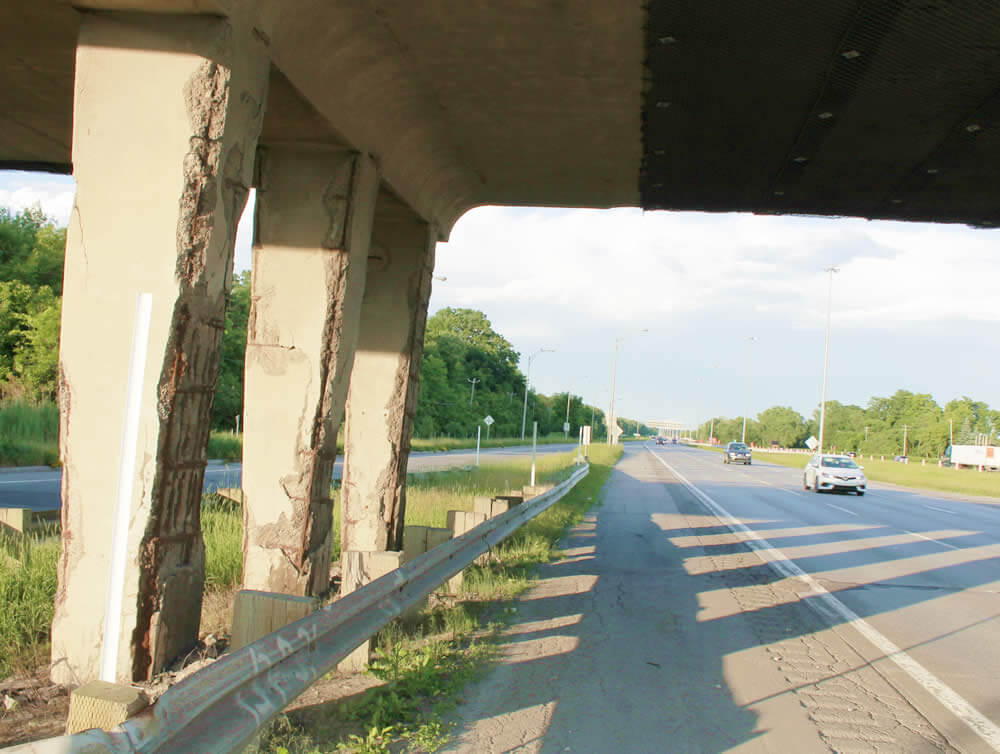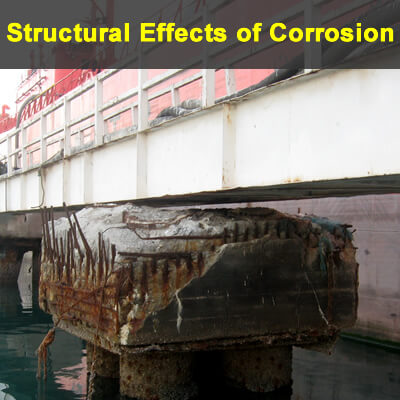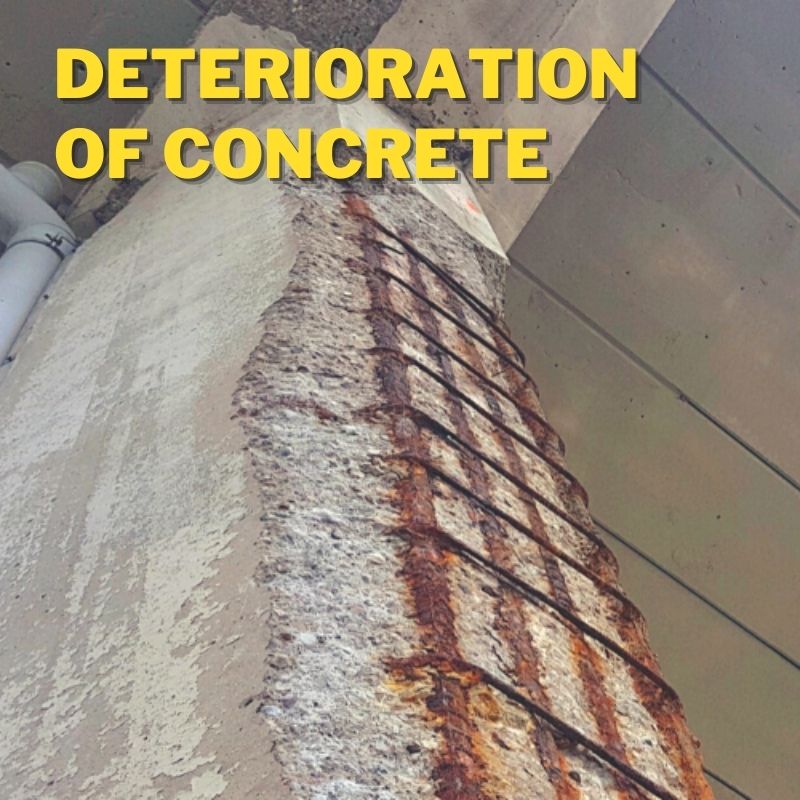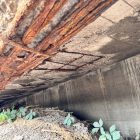Damaged Bridges are a major concern in the maintenance and operation of transportation infrastructure. Bridge structures in North America were mainly developed in the 1960’s and 1970’s and are rapidly approaching the end of their initial service life. Major mega cities in North America spend millions of dollars each year to keep these structures safe and functional.
According to the ASCE 2013 report card, “one in nine of the US bridges are rated as structurally deficient, while the average age of the 607,380 bridges is currently 42 years.” (1). The same thing is happening here in Canada. For example, Montreal is riddled with crumbling infrastructure, with so many bridge structures getting near to the end of their initial service life. The Champlain Bridge in Montreal is the most infamous case here as it is emblematic of problems that have haunted the city for decades: “Shoddy construction, neglected upkeep and jurisdictional squabble have contributed to create an emergency situation that could have been avoided.”(2)
Damaged Bridges

Bridges require continuous monitoring and testing to remain functional during their service life. Some bridges, such as the Gardiner Expressway in downtown Toronto, or Pont Champlain in Montreal are so important that literally can never be closed to traffic. Bridges suffer from a number of damage mechanisms; mainly because they are exposed. When they are exposed to harsh environmental condition, such as extreme cold or hot temperatures, they damage easier and more frequently. The change in the traffic can also damage bridges.

What Damages Bridges?
Depending on the bridge type and materials used for the construction, different damage mechanisms can contribute to the deterioration of bridge. The following is a summary of most common damages we observe in bridge structures (OSIM, 2008).
CONCRETE
- Scaling
- Disintegration
- Erosion
- Corrosion of Reinforcement
- Delamination
- Spalling
- Cracking
- Alkali Aggregate Reaction
- Surface Defects
STEEL
- Corrosion
- Permanent Deformations
- Cracking
- Connection Deficiencies
MASONERY
- Cracking
- Splitting, Spalling and Disintegration
- Loss of Mortar and Stones
- Aluminum
- Corrosion
- Cracking
- Connection Deficiencies
ASPHALT PAVEMENT
- Cracking
- Raveling
- Loss of Bond and Delamination
- Potholes
- Wheel Track Rutting
- Rippling
- Flushing
- Slippery Surface
- Coatings
- Coating Related Defects
- Adhesion Related Defects
How to test Damaged Bridges?
To achieve the desired performance throughout the service life of a bridge, a systematic maintenance plan (as part of asset management) should exist. This is normally referred to as Bridge Management System (BMS). Annual or Biennial Inspection (as in OSIM) of Bridges are accepted procedures in developing BMS. Testing bridges for potential damages can be difficult. A routine visual screening of bridges can identify the initiation of deterioration, and can help owners and managers plan accordingly.
Visual screening is often followed by more comprehensive test plans. Non-destructive test methods can play a key role in assessing bridges, as they can shed light into different damage mechanisms that are not visible, but are still active deep inside.
- Mechanical Methods such as Schmidt Rebound Hammer
- Acoustic Methods such as Ultrasonic Pulse Velocity (UPV), Impact-Echo, Acoustic Emission, Linear Resonance Frequency, Seismic Tomography, etc.
- Electromagnetic Methods such as Ground penetrating radar (GPR)
- Electrical and Electrochemical Methods such as Electrical Resistivity, Corrosion Rate, Half-cell, etc.










MS Ahamed Mihraj
A separate article required for bridge load assessment.l
Errol
Nice article..structural health monitoring of Bridge can also be included...
Manuchehr Emamgholi Babadi
Dear
Hello
I am experiences in Dam construction, Concrete Bridges and concrete building repairing.
I am interest to join with your corporation and make some corporation in this subject.
Therefore I would appreciate if you kindly let me know the manner of cooperation.
Thanks and Warmest Regards:
Dr. Manuchehr Emamgholi Babadi
Ashok Kumar Dhawan
It is good to know that you are in the Dam rehabilitation. I am presently working for World Bank Project on Dam rehabilitation and Improvement in India. Can you share some good publication on Concrete/ Masonry Dam rehabilitation. Our concrete dams are having problems mainly due temperature Gradients.
Manuchehr Emamgholi Babadi
Dear
Hello
I have 45 years experiences in Dam construction, Concrete Bridges and concrete building repairing.
I am interest to join with your corporation and make some corporation in this subject.
Therefore I would appreciate if you kindly let me know the manner of cooperation.
Thanks and Warmest Regards:
Dr. Manuchehr Emamgholi Babadi
Matt Jabbari
None of the bridges in Canada need to be closed for repair if our specialty shot Crete is used to repair the concrete. Our Tekcrete develops strengths of 2500 psi in 15 minutes followed by strength development of 8000 psi in 24 hours and 11000 psi in 28 days. Use this shotcrete to avoid long closures and public discomfort/frustration.
John
I believe that new technologies enabled Permanent Structure Health monitoring solutions to be very reliable and cost efficient at the same time. SHM enables asset managers to prioritise and optimally maintain big structures. There are many techniques however from my point of view tri-axial accelerometers can do most of the job. I just recently returned from Germany doing NDT of the bridge pavement. They where mounting, if I am not wrong, tri-axial solutions from this company: https://www.monodaq.com/ethercat/triaxial-accelerometer-daq/
Rob
I believe that new technologies enabled Permanent Structure Health monitoring solutions to be very reliable and cost efficient at the same time. SHM enables asset managers to prioritise and optimally maintain big structures. There are many techniques however from my point of view tri-axial accelerometers can do most of the job. I just recently returned from Germany doing NDT of the bridge pavement. They where mounting, if I am not wrong, tri-axial solutions from this company: https://www.monodaq.com/ethercat/triaxial-accelerometer-daq/
john
It was interesting when you mentioned that bridges require continuous testing to make sure they work proeprly. It is important to understand this to avoid accidents. I can see how anyone looking into this would want to find the best contractor to help them build and maintain a proper bridge.